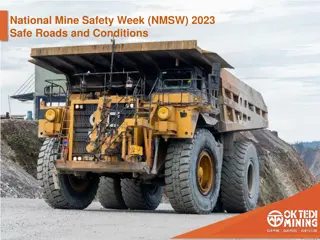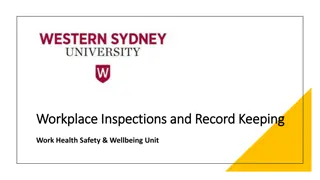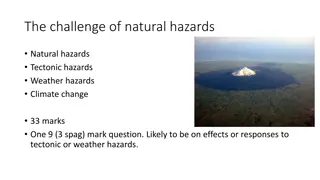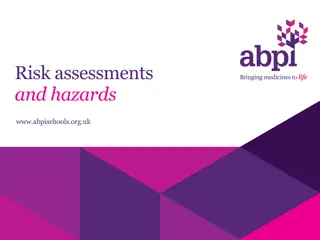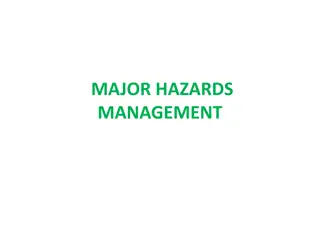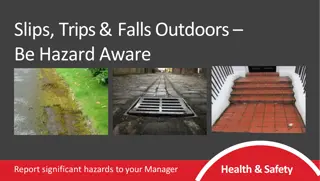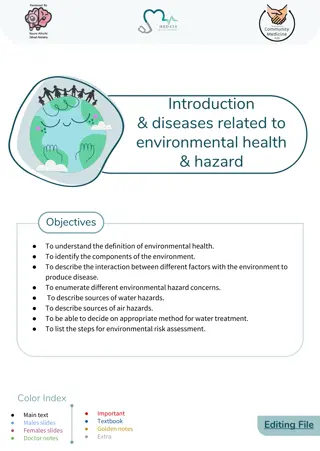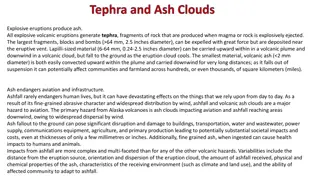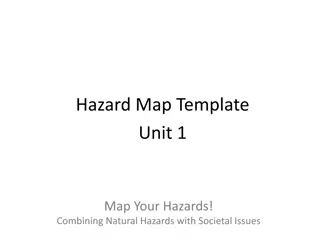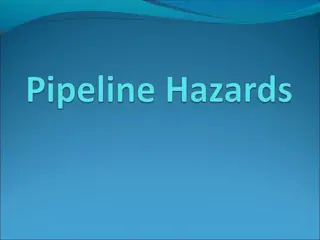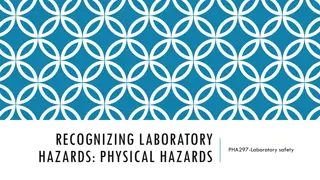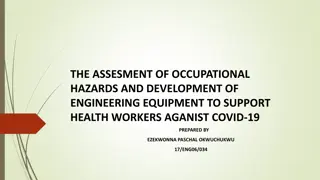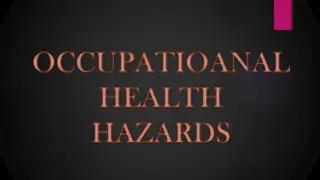Potential Health Hazards of Hydrofracking
Hydrofracking, also known as hydraulic fracturing, poses numerous potential health hazards due to the release of petroleum compounds, volatile organic compounds, polycyclic aromatic hydrocarbons, and various natural gas constituents into the environment. The process involves using water-based or non-aqueous drilling fluids, which can introduce harmful substances such as brine, barium sulfate, silica, and antimicrobials. This can lead to secondary ozone formation, noxious odors, community stress, and even impaired drinking water supplies. Additionally, hydrofracking operations have been linked to worksite injuries, motor vehicle accidents, earthquakes, and noise pollution. Limited scientific research exists on the health impacts of hydrofracking, highlighting the need for further study and regulation in this area.
Download Presentation

Please find below an Image/Link to download the presentation.
The content on the website is provided AS IS for your information and personal use only. It may not be sold, licensed, or shared on other websites without obtaining consent from the author.If you encounter any issues during the download, it is possible that the publisher has removed the file from their server.
You are allowed to download the files provided on this website for personal or commercial use, subject to the condition that they are used lawfully. All files are the property of their respective owners.
The content on the website is provided AS IS for your information and personal use only. It may not be sold, licensed, or shared on other websites without obtaining consent from the author.
E N D
Presentation Transcript
Hydrofracking: Potential Health Hazards Petroleum compounds Volatile organic compounds (VOCs) Polycyclic aromatic hydrocarbons (PAHs) Natural gas constituents Methane Sulfur compounds (H2S, sulfuric oxides) Nitrogen oxides Water-based drilling fluids Brine Barium sulfate Polymers, lubricants Non-aqueous drilling fluids Oils (diesel, mineral, paraffin) Barium sulfate Brine Silica Antimicrobials/biocides Secondary ozone formation Noise Worksite injuries Motor vehicle injuries Earthquakes Impaired drinking water supplies Noxious odors Community stress Modified from presentation by Mary Mortenson, CDC NCEH
Scarce Scientific Information in PubMed (Hydrofracking) AND Health: 1 policy analysis (Fracking) AND Health: 12 11 news or policy 1 methane in drinking water (Shale gas) AND Health: 21 10 news or polilcy 2 study design 2 case reports/pilot studies 1 occupational silica 4 risk assessment/modeling 2 environmental measurements (Unconventional Oil and Gas): 0 additional publications TOTAL = 34 publications, representing very little actual research
CDC/ATSDR Site Specific Assessments Dimock, PA 2011 identified unacceptable levels of bacteria, methane, and other harmful substances; recommended additional water sampling. LeRoy, PA 2011 evaluated data collected from 7 private drinking water wells following a well- head blow out at a nearby gas well. Identified hazardous levels of salts and levels of arsenic in another well could pose a health hazard. Did not attribute the presence of chemicals in the private wells to a definitive source. Water treatment systems have since been installed in the homes served by these wells. Pavillion, WY 2011 confirmed a potential public health hazard due to high concentrations of organic and inorganic chemicals in a drinking water well Medina, OH - 2011 identified hazardous levels of methane capable of causing an explosion in private drinking water wells. Recommended that a leaking abandoned natural gas well nearby be sealed because it represented an explosive hazard but did not link this gas well to the drinking water wells Garfield County, CO- 2008 and 2010 could not conclude whether levels of volatile organic compounds (VOCs) and other contaminants in ambient air posed a health risk because toxicity reference values do not exist for more than 60 VOCs. Posey County, IN Studying whether exposures from potentially contaminated drinking water wells pose a health concern. Washington County, PA - Collaborating on an air exposure investigation to determine if air exposures around a natural gas compressor station pose a health concern. Source: CDC Testimony April 2013 (Ikeda)
Federal support for health research on unconventional oil and gas production Searched: unconventional oil and gas, fracking, hydrofracking, shale gas, natural gas NIH: No funded projects EPA: 5 Extramural projects, 4 on water contaminants and 1 on community sustainability CDC/ATSDR: No funded projects, no research agenda CDC/NIOSH: Has a well organized research agenda for this sector: http://www.cdc.gov/niosh/programs/oilgas/pdfs/FY13OilGa sGoals.pdf
April 2013 Directive to Agencies Multiagency collaboration: Energy, Interior, EPA Signed by 3 agency leaders Each to focus on their core competencies Steering committee includes WH OSTP; leadership rotates among the three agencies. CDC provides support Research plan due in early 2014 to: analyze and synthesize the current state of knowledge, identify and prioritize research topics, identify gaps, identify research milestones and deliverables, establish cooperative mechanisms, determine future plans
Conclusions We know very little about public health consequences of unconventional oil and gas development Organized research planning for public heatlh research is focused on the EPA; HHS appears to be at the periphery Currently there is very little engagement of the academic community except in policy analysis and commentary


